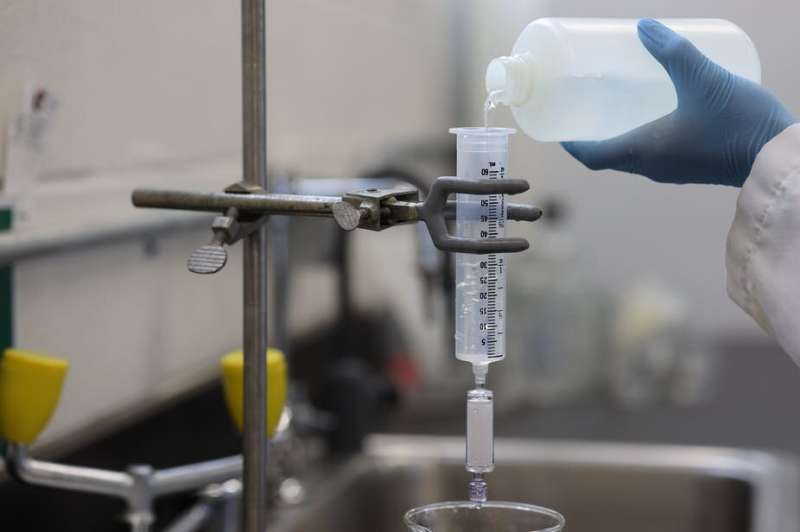Environmental DNA: How a tool used to detect endangered wildlife ended up helping fight the COVID-19 pandemic

Imagine discovering an animal species you thought had gone extinct was still living—without laying eyes on it. Such was the case with the Brazilian frog species Megaelosia bocainensis, whose complete disappearance in 1968 led scientists to believe it had become extinct. But through a novel genetic detection technique, .
Such discoveries are now possible thanks to a new approach that recovers and reads the trace amounts of DNA released into the environment by animals. It's called environmental DNA, or eDNA—and it takes advantage of the fact that via skin, hair, scales, feces or bodily fluids as it moves through the world.
at the University of Florida's , we responsible for a , which causes debilitating tumors. We also use eDNA to detect sea turtles in the wild.
But in 2020, human health researchers began repurposing eDNA techniques to track the COVID-19 pandemic. This is a prime example of how research in one area—wildlife conservation—can be adapted to another area—human disease mitigation. Going forward, we believe eDNA will prove to be an essential tool for monitoring both human and animal health.
From soil microbes to sea turtles
Scientists in the 1980s began . Over the next 20 years, the technique was adapted for use with air and water samples, and scientists started using eDNA to .
While the science behind eDNA techniques is complex, the actual process of collecting and testing a sample is relatively simple. Samples are filtered through very fine paper, which traps loose cells and strands of DNA. The techniques to read what DNA is present are the same as those used for tissue or blood samples, usually or . Scientists can either read all of the DNA present from every organism—or target just the DNA from species of interest.
Scientists now routinely use eDNA to . The ability to tell whether an animal is present without ever needing to lay eyes or a lens on it is an incredible leap forward, decreasing the time, resources and human effort needed to monitor and protect vulnerable species.
However, to truly protect endangered species, it's not just the animals that need to be monitored, but the pathogens that threaten their survival. Environmental DNA is able to monitor the parasites, fungi and .
Tracking COVID-19
While scientists originally over a decade ago, it wasn't until the beginning of the current COVID-19 human pandemic that the repurposing of eDNA took off on a large scale, allowing the technology to make staggering advancements in very short order.
Coronavirus genomes consist not of DNA, but rather its cousin molecule, RNA. So researchers have rapidly optimized a variation of eDNA—eRNA—to detect coronavirus RNA in air and human wastewater.
For example, at the University of Florida Health Shands Hospital, researchers collected air samples from the hospital room of two COVID-19 patients. Using eRNA, they . Confirming air as a key route of transmission directly influenced public health guidelines.
When scientists apply eRNA to , the . , peaked on March 9, 2020, but the number of clinical cases didn't peak until the start of April 2020 because of the lag time between infection and severe clinical symptoms.
This sort of predictive monitoring has profound implications for health care systems, allowing time to prepare—not just for COVID-19, but for any future disease outbreaks that threaten human populations.
Intersection of diseases
It's vital that human and animal diseases are studied together. —with many of these (42%) originating in wildlife populations, including Ebola, Zika, West Nile and Marburg viruses. Alternatively, .
SARS-CoV-2 has already infected , and —the latter of which .
Medics, veterinarians and scientists call this convergence of human, animal and environmental well-being or EcoHealth. Studying and treating human and wildlife disease together and often yields breakthroughs.
With eDNA, all pathogens can be monitored in an environment regardless of where they come from. An integrated eDNA monitoring program could cost-effectively provide advanced warning of human, livestock and wildlife diseases.
Provided by The Conversation
This article is republished from under a Creative Commons license. Read the .![]()

















